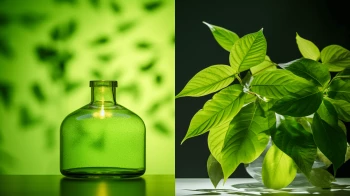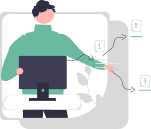Introduction
Maintaining a clean home is essential, but not all cleaning products are created equal. Explore the hidden dangers of common household cleaning ingredients to make informed choices for a healthier living space.
The Perils of Harsh Chemicals
1. Phthalates: The Silent Intruders
Phthalates are a group of chemicals commonly used to make plastics more flexible and durable. They are also frequently used as solvents in personal care products, such as fragrances, lotions, and shampoos, to enhance their scent and texture. Despite their widespread use, there is growing concern about the potential health risks associated with exposure to phthalates.
One major issue with phthalates is their ability to disrupt the endocrine system, which is responsible for regulating hormones in the body. Phthalates are known as endocrine disruptors because they can interfere with the normal functioning of hormones, particularly those involved in reproductive processes. This can have adverse effects on fertility, development, and overall reproductive health.
Phthalates, often found in fragrances, disrupt hormonal balance, impacting reproductive health. Opt for phthalate-free alternatives for a safer home.
2. Triclosan: A Threat to Antibiotic Resistance
Triclosan is an antimicrobial agent that has been widely used in personal care and household products for its antibacterial properties. It has been incorporated into items such as soaps, hand sanitizers, toothpaste, and even some household cleaning products. While the intention behind its use is to prevent the spread of bacteria and promote cleanliness, there are concerns about the potential negative impacts of triclosan, particularly regarding antibiotic resistance.
Commonly found in antibacterial products, triclosan contributes to antibiotic resistance. Choose plain soap and water for effective handwashing without unnecessary risks.
Natural vs. Synthetic: Making the Right Choice
3. Ammonia: A Window Cleaner with Hidden Costs
Ammonia is a common ingredient in many household cleaning products, particularly glass cleaners. While it is known for its effectiveness in cutting through grease and grime on glass surfaces, there are potential health and environmental concerns associated with its use.
Effective for glass, ammonia irritates eyes, skin, and the respiratory system. Choose natural alternatives like vinegar and water for streak-free windows without harmful side effects.
4. Chlorine Bleach: A Whitening Agent with Consequences
Chlorine bleach is a powerful disinfectant and whitening agent commonly used for laundry, cleaning, and disinfection. While it is effective in killing bacteria and viruses and removing stains, there are potential health and environmental consequences associated with its use. Chlorine bleach releases harmful fumes and can react to produce toxic compounds. Consider safer alternatives like oxygen bleach or hydrogen peroxide.
Green Alternatives for a Healthier Home
5. Volatile Organic Compounds (VOCs): Harming Air Quality
Volatile Organic Compounds (VOCs) are a group of chemicals that can evaporate into the air at room temperature, contributing to indoor air pollution. They are commonly found in many household products, including cleaning supplies, paints, solvents, and air fresheners. Common in household cleaners, VOCs contribute to indoor air pollution. Opt for low-VOC or VOC-free products for better air quality.
6. Artificial Fragrances: Pleasant Smells, Harmful Effects
Artificial fragrances, often found in a wide range of consumer products such as perfumes, air fresheners, candles, and cleaning products, are designed to impart pleasant scents. However, they can also pose potential health and environmental concerns. Synthetic fragrances can contain undisclosed chemicals. Choose products with natural scents or go fragrance-free for a safer olfactory experience.
Making Informed Choices
7. Reading Labels: The Key to a Safer Home
Becoming a label detective and carefully reading product labels is a crucial step in making informed and environmentally conscious choices for a safer home. Become a label detective. Look for certifications like "Green Seal" or "EcoLogo" to ensure products meet stringent environmental and health standards.
8. DIY Cleaning Solutions: Harnessing the Power of Nature
Create your cleaning solutions using simple, natural ingredients like baking soda, vinegar, and lemon. Not only are they effective, but they also eliminate the need for harmful chemicals.
DIY cleaning solutions made from natural ingredients can be effective alternatives to commercial cleaning products containing potentially harmful chemicals. Here are some simple and versatile DIY cleaning recipes using ingredients like baking soda, vinegar, and lemon:
All-Purpose Cleaner:
Ingredients:
- 1 cup distilled white vinegar
- 1 cup water
- Optional: 10-20 drops of essential oil (e.g., tea tree, lavender, lemon) for a pleasant scent and additional antibacterial properties
Instructions:
- Mix the vinegar and water in a spray bottle.
- Add the essential oil if desired.
- Shake well before use.
- Use the spray for general cleaning on surfaces such as countertops, sinks, and glass.
Baking Soda Scrub:
Ingredients:
- Baking soda
- Water
Instructions:
- In a small bowl, add enough water to create a paste when mixed with baking soda.
- Sprinkle baking soda on the surface to be cleaned.
- Apply the paste and scrub with a sponge or brush.
- Rinse thoroughly.
This scrub works well for cleaning sinks, tubs, and tile surfaces.
Lemon and Vinegar Glass Cleaner:
Ingredients:
- 1 cup distilled white vinegar
- 1 cup water
- Juice from 1 lemon
Instructions:
- Mix vinegar, water, and lemon juice in a spray bottle.
- Shake well before use.
- Spray on glass surfaces and wipe with a lint-free cloth for streak-free cleaning.
Deodorizing Carpet Powder:
Ingredients:
- 1 cup baking soda
- 10-20 drops of essential oil (e.g., lavender, peppermint)
Instructions:
- Mix the baking soda and essential oil in a bowl.
- Sprinkle the mixture on carpets and rugs.
- Let it sit for at least 15-20 minutes.
- Vacuum thoroughly to remove odors.
Disinfectant Surface Spray:
Ingredients:
- 1 cup water
- 1 cup white vinegar
- 10 drops tea tree essential oil
- 10 drops eucalyptus essential oil
Instructions:
- Mix water, vinegar, and essential oils in a spray bottle.
- Shake well before use.
- Spray on surfaces and allow it to sit for a few minutes before wiping.
Tea tree and eucalyptus oils have natural antibacterial properties.
Drain Cleaner:
Ingredients:
- 1 cup baking soda
- 1 cup distilled white vinegar
- Boiling water
Instructions:
- Pour the baking soda into the drain.
- Follow with the vinegar.
- Let it fizz for 5-10 minutes.
- Flush with boiling water to clear the drain.
These DIY cleaning solutions harness the natural cleaning power of ingredients like baking soda, vinegar, and lemon while eliminating the need for harsh chemicals. They are environmentally friendly, cost-effective, and customizable to suit your preferences. Always spot-test on a small, inconspicuous area before using any new cleaning solution on a larger surface.
Conclusion
Understanding the potential dangers of certain cleaning ingredients empowers you to make conscious choices for a healthier home. Embrace eco-friendly alternatives and prioritize your household's well-being. Make the change today for a safer, greener tomorrow.






